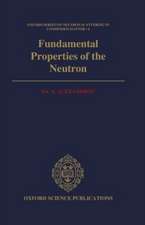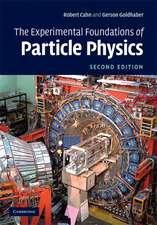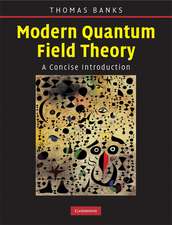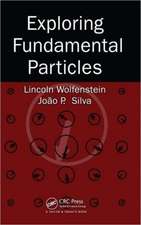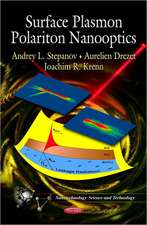Nuclear Fuel Cycle Science and Engineering: Woodhead Publishing Series in Energy
Editat de Ian Crosslanden Limba Engleză Paperback – 18 aug 2016
- Provides a comprehensive and holistic review of the complete nuclear fuel cycle
- Reviews the issues presented by the nuclear fuel cycle, including radiological protection and security, public acceptance and economic analysis
- Discusses issues at the front-end of the fuel cycle, including uranium and thorium mining, enrichment and fuel design and fabrication
Din seria Woodhead Publishing Series in Energy
-
 Preț: 853.23 lei
Preț: 853.23 lei - 24%
 Preț: 1209.19 lei
Preț: 1209.19 lei - 24%
 Preț: 1307.96 lei
Preț: 1307.96 lei - 24%
 Preț: 1386.95 lei
Preț: 1386.95 lei - 9%
 Preț: 900.25 lei
Preț: 900.25 lei - 9%
 Preț: 1067.83 lei
Preț: 1067.83 lei - 29%
 Preț: 1071.46 lei
Preț: 1071.46 lei - 9%
 Preț: 950.40 lei
Preț: 950.40 lei - 9%
 Preț: 1011.50 lei
Preț: 1011.50 lei - 29%
 Preț: 1071.13 lei
Preț: 1071.13 lei - 9%
 Preț: 1309.35 lei
Preț: 1309.35 lei - 39%
 Preț: 1047.65 lei
Preț: 1047.65 lei - 9%
 Preț: 949.23 lei
Preț: 949.23 lei - 24%
 Preț: 1688.64 lei
Preț: 1688.64 lei - 9%
 Preț: 1344.70 lei
Preț: 1344.70 lei - 9%
 Preț: 1049.56 lei
Preț: 1049.56 lei - 27%
 Preț: 1937.44 lei
Preț: 1937.44 lei - 23%
 Preț: 1519.01 lei
Preț: 1519.01 lei - 23%
 Preț: 1074.68 lei
Preț: 1074.68 lei - 29%
 Preț: 981.24 lei
Preț: 981.24 lei - 9%
 Preț: 1397.24 lei
Preț: 1397.24 lei - 39%
 Preț: 1397.48 lei
Preț: 1397.48 lei - 9%
 Preț: 945.89 lei
Preț: 945.89 lei - 9%
 Preț: 1073.87 lei
Preț: 1073.87 lei - 9%
 Preț: 1514.09 lei
Preț: 1514.09 lei - 9%
 Preț: 1020.23 lei
Preț: 1020.23 lei - 39%
 Preț: 880.81 lei
Preț: 880.81 lei - 9%
 Preț: 950.94 lei
Preț: 950.94 lei - 39%
 Preț: 1225.96 lei
Preț: 1225.96 lei - 9%
 Preț: 1214.08 lei
Preț: 1214.08 lei - 39%
 Preț: 1085.98 lei
Preț: 1085.98 lei - 9%
 Preț: 868.43 lei
Preț: 868.43 lei - 24%
 Preț: 1615.93 lei
Preț: 1615.93 lei - 31%
 Preț: 927.68 lei
Preț: 927.68 lei - 24%
 Preț: 1077.86 lei
Preț: 1077.86 lei - 9%
 Preț: 946.04 lei
Preț: 946.04 lei - 9%
 Preț: 952.05 lei
Preț: 952.05 lei - 9%
 Preț: 1165.33 lei
Preț: 1165.33 lei - 24%
 Preț: 1307.96 lei
Preț: 1307.96 lei - 29%
 Preț: 1213.47 lei
Preț: 1213.47 lei - 24%
 Preț: 1075.25 lei
Preț: 1075.25 lei - 24%
 Preț: 1048.44 lei
Preț: 1048.44 lei - 29%
 Preț: 1454.22 lei
Preț: 1454.22 lei - 39%
 Preț: 1285.27 lei
Preț: 1285.27 lei - 9%
 Preț: 952.68 lei
Preț: 952.68 lei - 23%
 Preț: 878.04 lei
Preț: 878.04 lei - 9%
 Preț: 951.98 lei
Preț: 951.98 lei - 9%
 Preț: 1233.82 lei
Preț: 1233.82 lei
Preț: 1209.42 lei
Preț vechi: 1329.04 lei
-9% Nou
Puncte Express: 1814
Preț estimativ în valută:
231.43€ • 247.47$ • 192.96£
231.43€ • 247.47$ • 192.96£
Carte tipărită la comandă
Livrare economică 10-24 aprilie
Preluare comenzi: 021 569.72.76
Specificații
ISBN-13: 9780081016114
ISBN-10: 0081016115
Pagini: 648
Dimensiuni: 156 x 234 x 33 mm
Greutate: 0.9 kg
Editura: ELSEVIER SCIENCE
Seria Woodhead Publishing Series in Energy
ISBN-10: 0081016115
Pagini: 648
Dimensiuni: 156 x 234 x 33 mm
Greutate: 0.9 kg
Editura: ELSEVIER SCIENCE
Seria Woodhead Publishing Series in Energy
Cuprins
Contributor contact details
Woodhead Publishing Series in Energy
National Nuclear Laboratory
Part I: Introduction to the nuclear fuel cycle
Chapter 1: Nuclear power: origins and outlook
Abstract:
1.1 The rise of nuclear power: 1938 to 1970
1.2 The fall: 1970 to the mid-1990s
1.3 The resurgence: the mid-1990s to the present day
1.4 Future trends
Chapter 2: Radiological protection and the nuclear fuel cycle
Abstract:
2.1 Introduction
2.2 The international system of radiological protection
2.3 International safety standards
2.4 International Atomic Energy Agency (IAEA) safety requirements and guidance for radiation protection
2.5 Radiation protection in the nuclear fuel cycle
2.6 Conclusions and future trends
2.8 Appendix: Requirements of the International Basic Safety Standards relevant to radiological safety in the nuclear fuel cycle
Chapter 3: Safeguards, security, safety and the nuclear fuel cycle
Abstract:
3.1 Introduction
3.2 Nuclear safeguards
3.3 Nuclear security
3.4 Nuclear safety
3.5 Conclusion and future trends
3.6 Sources of further information and advice
Chapter 4: Public acceptability of nuclear technology
Abstract:
4.1 Introduction
4.2 Historical background
4.3 Investigating determinants of acceptability of nuclear technology
4.4 Beyond an instrumental approach to public acceptability
4.5 Future trends
Chapter 5: The economics of nuclear power
Abstract:
5.1 Introduction
5.2 Levelised cost of electricity (LCOE)
5.3 Financing of NPPs
5.4 Conclusions
5.5 Future trends
Part II: Uranium and thorium nuclear fuel cycles: materials mining, enrichment and fuel element design and fabrication
Chapter 6: Mining and milling of uranium
Abstract:
6.1 Introduction
6.2 Uranium mining and milling
6.3 World uranium mines
6.4 Environmental and social impacts
6.5 Secondary sources of uranium
6.6 Conclusion and future trends
Chapter 7: Uranium conversion and enrichment
Abstract:
7.1 Introduction
7.2 Uranium hexafluoride
7.3 Conversion
7.4 Enrichment
7.5 Uranium hexafluoride quality, sampling and analysis
7.6 Tails management
7.7 Transport cylinder management
7.8 Nuclear safeguards
7.9 Future trends
Chapter 8: Development of the thorium fuel cycle
Abstract:
8.1 Reasons for considering the thorium cycle
8.2 History and development of the thorium fuel cycle
8.3 Key technological features of the thorium fuel cycle and industrial challenges
8.4 Generic issues linked to the deployment of the thorium fuel cycle
8.5 Conclusion
Chapter 9: Nuclear fuel assembly design and fabrication
Abstract:
9.1 Introduction
9.2 Principal design features of LWR fuel assemblies
9.3 Basic reactor physics affecting fuel assembly design
9.4 Fuel rod design and fabrication
9.5 Fuel forms
9.6 Factors affecting fuel rod endurance
9.7 Future trends
9.8 Sources of further information
Part III: Impact of nuclear reactor design and operation on fuel element irradiation
Chapter 10: Water cooled thermal reactor designs, operation and fuel cycle
Abstract:
10.1 Introduction
10.2 Main characteristic of LWRs
10.3 Pressurised water reactor (PWR) design features
10.4 Factors affecting reactivity and their impact on PWR reactor design
10.5 PWR core design
10.6 Boiling water reactor (BWR) design features
10.7 Factors affecting reactivity and their impact on BWR reactor design
10.8 BWR core and fuel assembly design
10.9 Safety features and issues
10.10 Advantages and limitations
10.11 Future trends
10.12 Sources of further information
Chapter 11: CANDU nuclear reactor designs, operation and fuel cycle
Abstract:
11.1 Introduction
11.2 CANDU reactor features
11.3 CANDU fuel and refuelling
11.4 CANDU reactor control and safety
11.5 Future trends
Chapter 12: Gas-cooled nuclear reactor designs, operation and fuel cycle
Abstract:
12.1 Introduction
12.2 Magnox reactors
12.3 The advanced gas-cooled reactor (AGR)
12.3.5 Fuel storage
12.3.6 Waste management and decommissioning
12.4 Safety features and issues
12.5 The high-temperature gas-cooled reactor (HTGR)
12.5.2 Main plant features
12.5.3 Fuel design and refuelling
12.6 Acknowledgements
Chapter 13: Generation IV reactor designs, operation and fuel cycle
Abstract:
13.1 Introduction
13.2 General issues in developing sustainable fuel cycles
13.3 The Generation IV Initiative
13.4 Common Generation IV requirements for fuels and fuel cycles
13.5 The very high-temperature reactor (VHTR) and its fuel cycle
13.6 The supercritical water-cooled reactor (SCWR) and its fuel cycle
13.7 The molten salt reactor (MSR) and its fuel cycle
13.8 The sodium-cooled fast reactor (SFR) and its fuel cycle
13.9 The lead-cooled fast reactor (LFR) and its fuel cycle
13.10 The gas-cooled fast reactor (GFR) and its fuel cycle
13.11 Future trends
13.12 Sources of further information and advice
Chapter 14: Understanding and modelling fuel behaviour under irradiation
Abstract:
14.1 Introduction
14.2 Description of important phenomena
14.3 Modelling fuel behaviour under irradiation
14.4 Sources of further information
Part IV: Spent nuclear fuel and radioactive waste management
Chapter 15: Nuclear management of spent fuel from power reactors
Abstract:
15.1 Types of nuclear reactors and nuclear fuel arisings
15.2 International initiatives in spent fuel management
15.3 Characteristics of spent nuclear fuel
15.4 Spent fuel management strategies
15.5 Spent fuel storage
15.6 Spent fuel disposal
15.7 Spent fuel reprocessing and recycling
15.8 High-level radioactive waste (HLW) storage and disposal
Chapter 16: Reprocessing of spent oxide fuel from nuclear power reactors
Abstract:
16.1 Introduction: closed and open cycles
16.2 Targets and constraints of reprocessing
16.3 Main industrial reprocessing process (PUREX)
16.4 Reprocessing plant
16.5 Reprocessing: industrial organization
16.6 Closed cycles
16.7 Future trends
16.8 Sources of further information and advice
16.9 Appendix: Industrial-scale reprocessing of spent oxide fuel in selected countries
Chapter 17: Partitioning and transmutation of spent nuclear fuel and radioactive waste
Abstract:
17.1 Introduction
17.2 Physics of transmutation
17.3 Transmutation in different types of reactors
17.4 Implementation scenarios
17.5 Potential benefits of P&T for a repository
17.6 Future trends and R&D challenges
17.7 Conclusions
17.8 Acknowledgement
Chapter 18: Disposal of radioactive waste
Abstract:
18.1 Introduction
18.2 Nature of radioactive waste
18.3 Pre-disposal
18.4 Framework for disposal
18.5 Modern disposal practice
18.6 Future trends
18.7 Sources of further information and advice
Chapter 19: Packaging and transport of radioactive material in the nuclear fuel cycle
Abstract:
19.1 Introduction
19.2 Safety and security in the packaging and transport of radioactive material
19.3 Governing international regulatory security principles and guidance in radioactive materials’ packaging and transport
19.4 Regulatory requirements for packages and transport
19.5 Transport experience and operations
19.6 Current technologies and future trends
19.8 Acknowledgements
Co-operation in the field of nuclear power: An overview of non-commercial international nuclear power organisations
Index
Woodhead Publishing Series in Energy
National Nuclear Laboratory
Part I: Introduction to the nuclear fuel cycle
Chapter 1: Nuclear power: origins and outlook
Abstract:
1.1 The rise of nuclear power: 1938 to 1970
1.2 The fall: 1970 to the mid-1990s
1.3 The resurgence: the mid-1990s to the present day
1.4 Future trends
Chapter 2: Radiological protection and the nuclear fuel cycle
Abstract:
2.1 Introduction
2.2 The international system of radiological protection
2.3 International safety standards
2.4 International Atomic Energy Agency (IAEA) safety requirements and guidance for radiation protection
2.5 Radiation protection in the nuclear fuel cycle
2.6 Conclusions and future trends
2.8 Appendix: Requirements of the International Basic Safety Standards relevant to radiological safety in the nuclear fuel cycle
Chapter 3: Safeguards, security, safety and the nuclear fuel cycle
Abstract:
3.1 Introduction
3.2 Nuclear safeguards
3.3 Nuclear security
3.4 Nuclear safety
3.5 Conclusion and future trends
3.6 Sources of further information and advice
Chapter 4: Public acceptability of nuclear technology
Abstract:
4.1 Introduction
4.2 Historical background
4.3 Investigating determinants of acceptability of nuclear technology
4.4 Beyond an instrumental approach to public acceptability
4.5 Future trends
Chapter 5: The economics of nuclear power
Abstract:
5.1 Introduction
5.2 Levelised cost of electricity (LCOE)
5.3 Financing of NPPs
5.4 Conclusions
5.5 Future trends
Part II: Uranium and thorium nuclear fuel cycles: materials mining, enrichment and fuel element design and fabrication
Chapter 6: Mining and milling of uranium
Abstract:
6.1 Introduction
6.2 Uranium mining and milling
6.3 World uranium mines
6.4 Environmental and social impacts
6.5 Secondary sources of uranium
6.6 Conclusion and future trends
Chapter 7: Uranium conversion and enrichment
Abstract:
7.1 Introduction
7.2 Uranium hexafluoride
7.3 Conversion
7.4 Enrichment
7.5 Uranium hexafluoride quality, sampling and analysis
7.6 Tails management
7.7 Transport cylinder management
7.8 Nuclear safeguards
7.9 Future trends
Chapter 8: Development of the thorium fuel cycle
Abstract:
8.1 Reasons for considering the thorium cycle
8.2 History and development of the thorium fuel cycle
8.3 Key technological features of the thorium fuel cycle and industrial challenges
8.4 Generic issues linked to the deployment of the thorium fuel cycle
8.5 Conclusion
Chapter 9: Nuclear fuel assembly design and fabrication
Abstract:
9.1 Introduction
9.2 Principal design features of LWR fuel assemblies
9.3 Basic reactor physics affecting fuel assembly design
9.4 Fuel rod design and fabrication
9.5 Fuel forms
9.6 Factors affecting fuel rod endurance
9.7 Future trends
9.8 Sources of further information
Part III: Impact of nuclear reactor design and operation on fuel element irradiation
Chapter 10: Water cooled thermal reactor designs, operation and fuel cycle
Abstract:
10.1 Introduction
10.2 Main characteristic of LWRs
10.3 Pressurised water reactor (PWR) design features
10.4 Factors affecting reactivity and their impact on PWR reactor design
10.5 PWR core design
10.6 Boiling water reactor (BWR) design features
10.7 Factors affecting reactivity and their impact on BWR reactor design
10.8 BWR core and fuel assembly design
10.9 Safety features and issues
10.10 Advantages and limitations
10.11 Future trends
10.12 Sources of further information
Chapter 11: CANDU nuclear reactor designs, operation and fuel cycle
Abstract:
11.1 Introduction
11.2 CANDU reactor features
11.3 CANDU fuel and refuelling
11.4 CANDU reactor control and safety
11.5 Future trends
Chapter 12: Gas-cooled nuclear reactor designs, operation and fuel cycle
Abstract:
12.1 Introduction
12.2 Magnox reactors
12.3 The advanced gas-cooled reactor (AGR)
12.3.5 Fuel storage
12.3.6 Waste management and decommissioning
12.4 Safety features and issues
12.5 The high-temperature gas-cooled reactor (HTGR)
12.5.2 Main plant features
12.5.3 Fuel design and refuelling
12.6 Acknowledgements
Chapter 13: Generation IV reactor designs, operation and fuel cycle
Abstract:
13.1 Introduction
13.2 General issues in developing sustainable fuel cycles
13.3 The Generation IV Initiative
13.4 Common Generation IV requirements for fuels and fuel cycles
13.5 The very high-temperature reactor (VHTR) and its fuel cycle
13.6 The supercritical water-cooled reactor (SCWR) and its fuel cycle
13.7 The molten salt reactor (MSR) and its fuel cycle
13.8 The sodium-cooled fast reactor (SFR) and its fuel cycle
13.9 The lead-cooled fast reactor (LFR) and its fuel cycle
13.10 The gas-cooled fast reactor (GFR) and its fuel cycle
13.11 Future trends
13.12 Sources of further information and advice
Chapter 14: Understanding and modelling fuel behaviour under irradiation
Abstract:
14.1 Introduction
14.2 Description of important phenomena
14.3 Modelling fuel behaviour under irradiation
14.4 Sources of further information
Part IV: Spent nuclear fuel and radioactive waste management
Chapter 15: Nuclear management of spent fuel from power reactors
Abstract:
15.1 Types of nuclear reactors and nuclear fuel arisings
15.2 International initiatives in spent fuel management
15.3 Characteristics of spent nuclear fuel
15.4 Spent fuel management strategies
15.5 Spent fuel storage
15.6 Spent fuel disposal
15.7 Spent fuel reprocessing and recycling
15.8 High-level radioactive waste (HLW) storage and disposal
Chapter 16: Reprocessing of spent oxide fuel from nuclear power reactors
Abstract:
16.1 Introduction: closed and open cycles
16.2 Targets and constraints of reprocessing
16.3 Main industrial reprocessing process (PUREX)
16.4 Reprocessing plant
16.5 Reprocessing: industrial organization
16.6 Closed cycles
16.7 Future trends
16.8 Sources of further information and advice
16.9 Appendix: Industrial-scale reprocessing of spent oxide fuel in selected countries
Chapter 17: Partitioning and transmutation of spent nuclear fuel and radioactive waste
Abstract:
17.1 Introduction
17.2 Physics of transmutation
17.3 Transmutation in different types of reactors
17.4 Implementation scenarios
17.5 Potential benefits of P&T for a repository
17.6 Future trends and R&D challenges
17.7 Conclusions
17.8 Acknowledgement
Chapter 18: Disposal of radioactive waste
Abstract:
18.1 Introduction
18.2 Nature of radioactive waste
18.3 Pre-disposal
18.4 Framework for disposal
18.5 Modern disposal practice
18.6 Future trends
18.7 Sources of further information and advice
Chapter 19: Packaging and transport of radioactive material in the nuclear fuel cycle
Abstract:
19.1 Introduction
19.2 Safety and security in the packaging and transport of radioactive material
19.3 Governing international regulatory security principles and guidance in radioactive materials’ packaging and transport
19.4 Regulatory requirements for packages and transport
19.5 Transport experience and operations
19.6 Current technologies and future trends
19.8 Acknowledgements
Co-operation in the field of nuclear power: An overview of non-commercial international nuclear power organisations
Index



